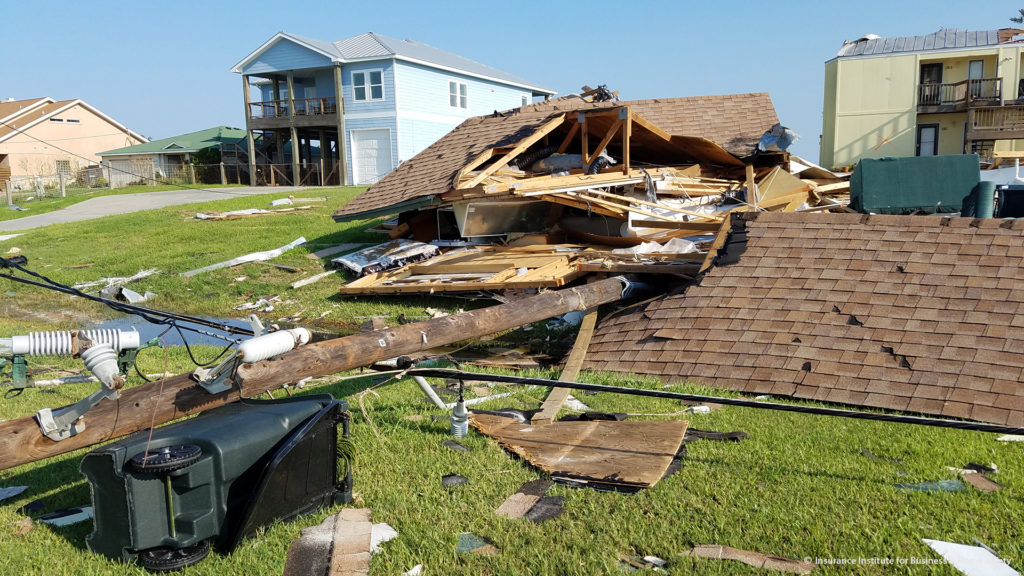Your roof is your home’s first line of defense against severe weather. Strengthening it to perform better in future storms is a critical step in your journey toward a more resilient home. Once your roof is FORTIFIED, there may be other vulnerable areas of your home. Here are five areas to explore:
1. Garage Doors
If your garage door isn’t rated for the weather it is likely to face where you live, high winds may cause it to blow in, allowing pressure to build up and compromise the structural integrity of your entire home. Keeping those high winds from entering your home is critical for its survival in a storm. When a garage door fails, it’s common to see blown-out walls and collapsed roofs as that pressure pushes up and out. FORTIFIED Silver minimize this risk by requiring garage doors rated to withstand high pressures, and in hurricane-prone areas, garage doors with windows to be rated to withstand impact from windborne debris. Even if you’re not reaching for a FORTIFIED designation, protecting the largest opening in your home just makes sense.
2. Windows & Doors
When rain and storm pressures penetrate a home, damage quickly escalates. That’s why it is so important to defend openings like doors and windows. If you live in a hurricane-prone area and don’t have impact resistant glass, consider purchasing a lab-tested window protection system. They offer more protection from flying debris than plywood and can help keep the rain and wind outside your home.
When severe weather hits, keeping the storm pressure out is also critical, and one of the easiest ways for it to barge into your home is through doors and windows. Once inside, storm pressure pushes outward on your walls and roof and can cause catastrophic damage to the structure of your home. Fortunately, you can defend against this by using windows and doors that are properly rated for the weather you face. This is a large purchase so if your budget doesn’t allow for replacing all doors and windows at once, considering switching them out in phases.
3. Gable Ends
Post-disaster studies show that unbraced gable ends are a critical weak link for homes when they are attacked by high winds. By requiring additional bracing, the FORTIFIED standard protects this section of a home, minimizing the chance of collapse.
Gables can be braced by adding additional lumber as described in FORTIFIED technical documents. A FORTIFIED contractor or evaluator can help you determine what, if any, bracing your home needs.
4. Attached Structures
High winds can flow under the roof of a carport or porch, and if the structure is not properly anchored, it can lift up like a kite taking part of your house with it. FORTIFIED requires strong anchors and proper connections to prevent this type of damage. Even if you’re not currently working toward FORTIFIED Silver, a FORTIFIED evaluator can help you determine the best way to secure your attached structure.
5. Soffits
IBHS testing shows that when wind drives rain sideways, it can actually blow up under your roof overhangs. Your soffits should prevent that water from sneaking into your attic, but in traditionally-built homes, soffits are often hung with inadequate support. This can result in them being easily blown away and gives wind-driven rain easy access to your home. Extra bracing and additional fasteners will keep soffits in place.
Read more of our tips and ideas in the Homeowner Resources section.
Stay In The Know
Do you want to keep up with the latest resiliency research? Would you like timely tips and reminders to keep your home safe from Mother Nature? Are you interested in the science behind the FORTIFIED standard? Then sign up for the FORTIFIED Update, today!

